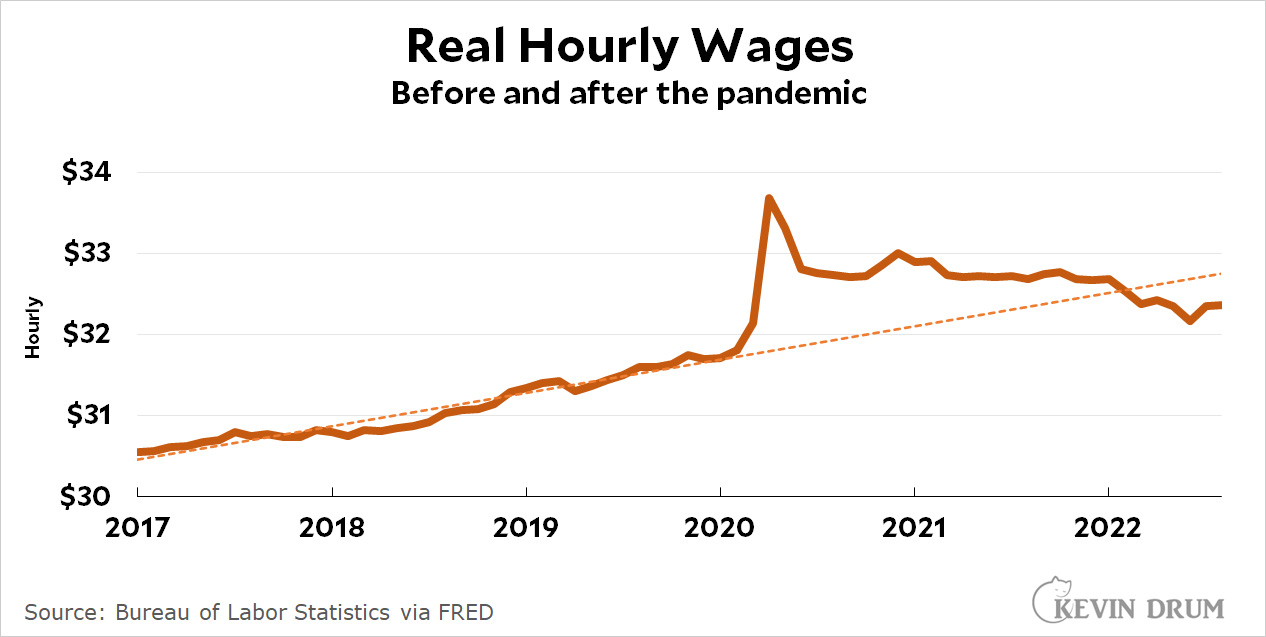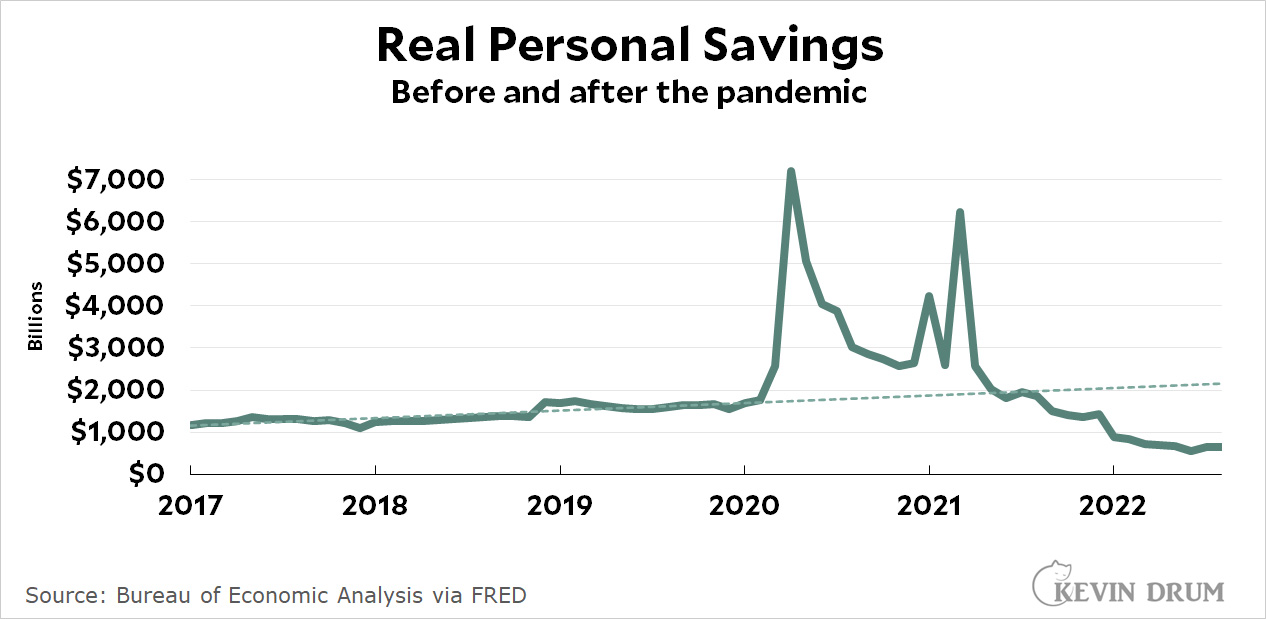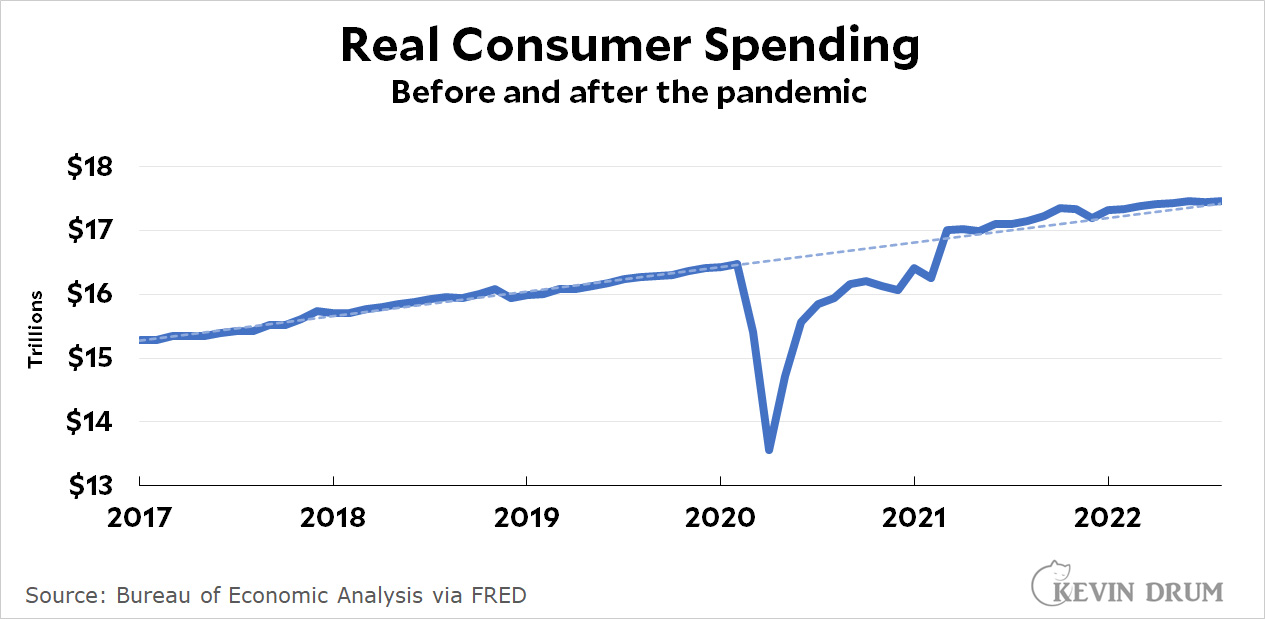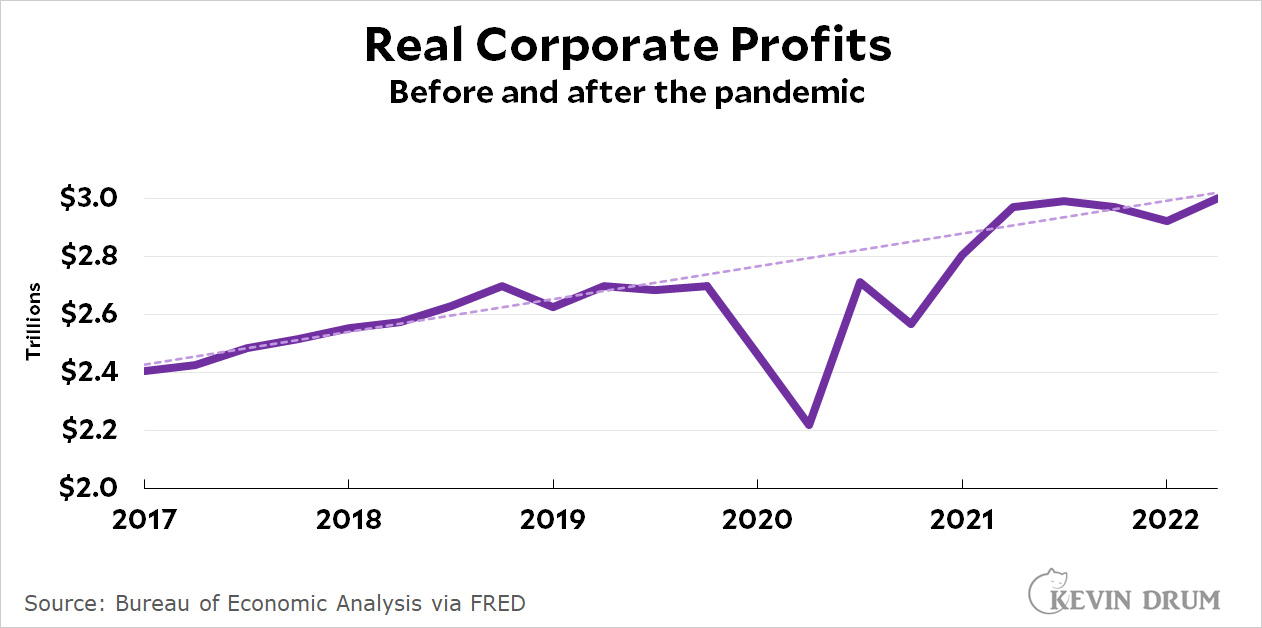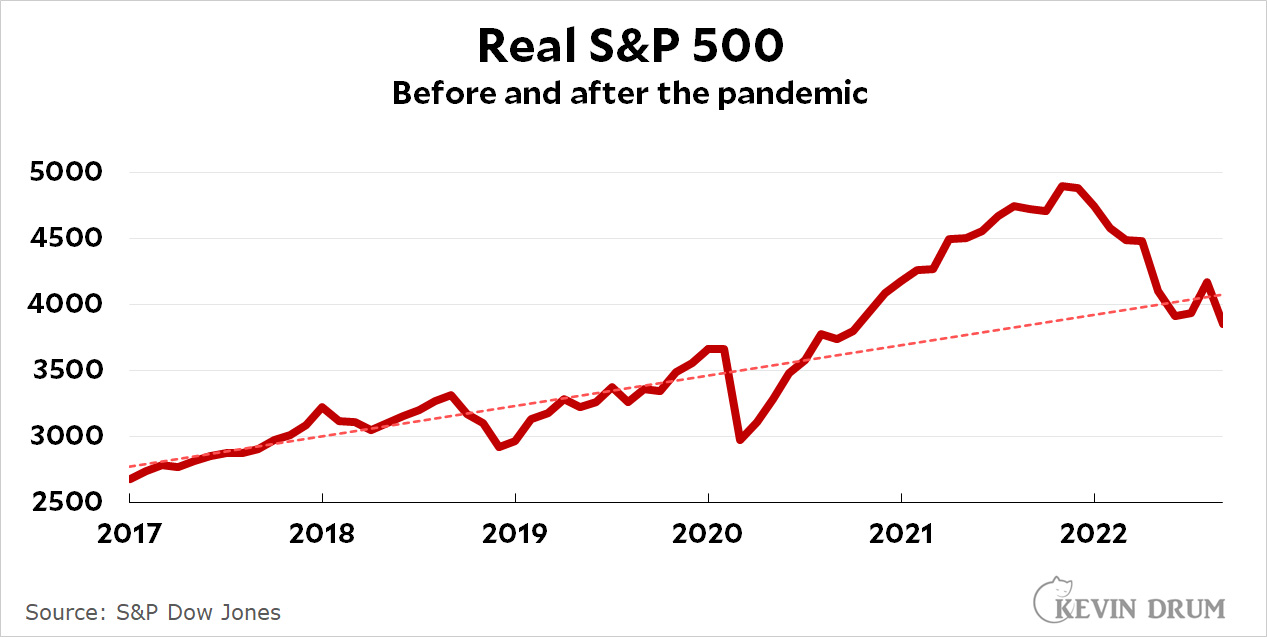The Washington Post has yet another story today about the calamitous shortage of US public school teachers in the aftermath of the COVID-19 pandemic. It starts off with the headaches faced by Carolyn Stewart, the superintendent of the Bullhead City School District in Arizona:
The 2,300 students in her district had been back in school for several weeks, but she was still missing almost 30 percent of her classroom staff. Each day involved a high-wire act of emergency substitutes and reconfigured classrooms as the fallout continued to arrive in her email. Another teacher had just written to give her two-week notice, citing “chronic exhaustion.”
....Stewart had been working in some of the country’s most challenging public schools for 52 years, but only in recent months had she begun to worry that the entire system of American education was at risk of failing. The United States had lost 370,000 teachers since the beginning of the pandemic, according to the Bureau of Labor Statistics. Maine had started recruiting summer camp counselors into classrooms, Florida was relying on military veterans with no prior teaching experience, and Arizona had dropped its college-degree requirement.
Just to start off, I don't doubt for a second that Stewart is having trouble hiring teachers in her high-poverty school district out in the middle of the Mojave Desert. I wouldn't be surprised if they have hiring problems every single year. But Bullhead City is just one school district, so let's check the national statistics quoted in the story:
 Spot on! The current number (for August 2022) is 370,000 less than the number for January 2020.
Spot on! The current number (for August 2022) is 370,000 less than the number for January 2020.
But there's a problem here: this number is for all education employees, fewer than half of whom are classroom teachers. The actual shortfall is closer to 160,000. And there's more: you really need to compare this to the number of K-12 students over the same period. Here it is:
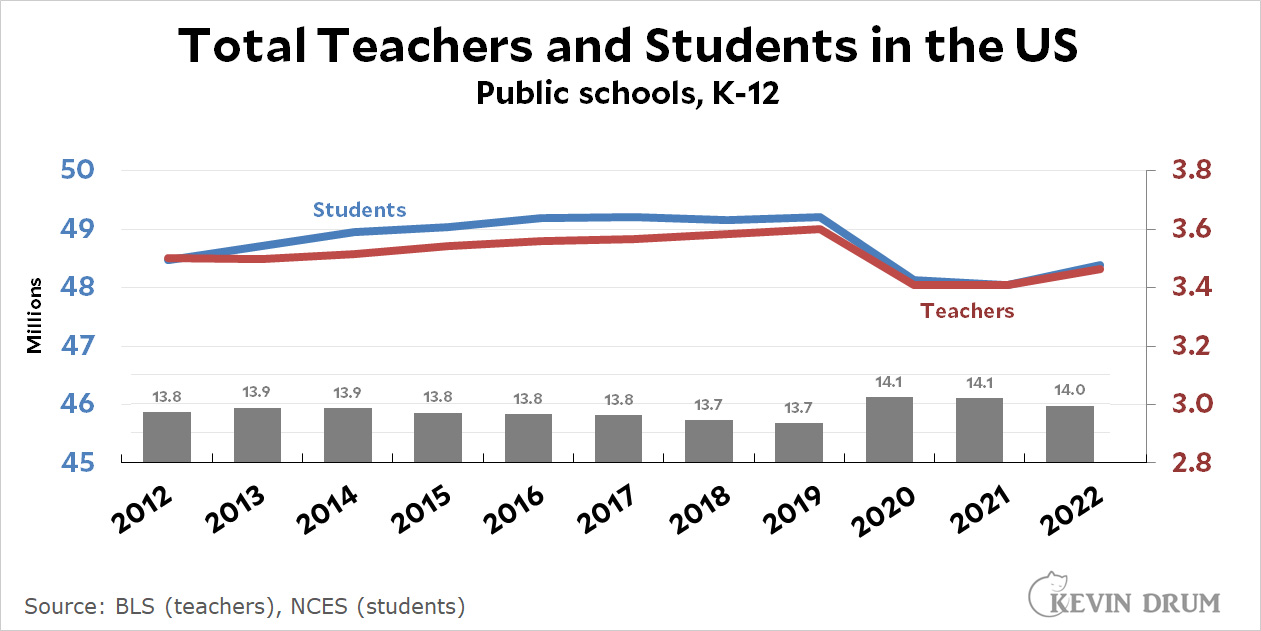 The number of teachers is lower than it was before the pandemic, but so is the number of students. In other words, while there might really be a shortage of teachers, you have to account for the decline in the number of students to put a real number on it. And that's pretty easy. The teacher-student ratio (the gray bars) is currently 14:1 compared to 13.7:1 in 2019. A bit of simple arithmetic tells us that in order to get back to the teacher-student ratio we had before the pandemic we'd need about 70,000 more teachers.
The number of teachers is lower than it was before the pandemic, but so is the number of students. In other words, while there might really be a shortage of teachers, you have to account for the decline in the number of students to put a real number on it. And that's pretty easy. The teacher-student ratio (the gray bars) is currently 14:1 compared to 13.7:1 in 2019. A bit of simple arithmetic tells us that in order to get back to the teacher-student ratio we had before the pandemic we'd need about 70,000 more teachers.
So the real shortage is less than a quarter of the raw number quoted in the story. If Arizona is similar to the rest of the country, it's probably short about 1,500 teachers, or less than one per school.¹
If you cherry pick, you can find plenty of schools—or entire districts—that are well above that average. Bullhead City sounds like one of them. But overall, the United States K-12 system is not at risk of failing.
Not from raw numbers of teachers, anyway. If you want to make the case that the problem is dire for some other reason—for example, schools trying to handle both remote and in-person teaching until they're fully in-person again—that's fine. Make your case. But let's at least get our sums right when we do it.
¹The United States as a whole has about 95,000 public K-12 schools. If we're short 70,000 teachers, that's an average of 0.74 teachers per school.
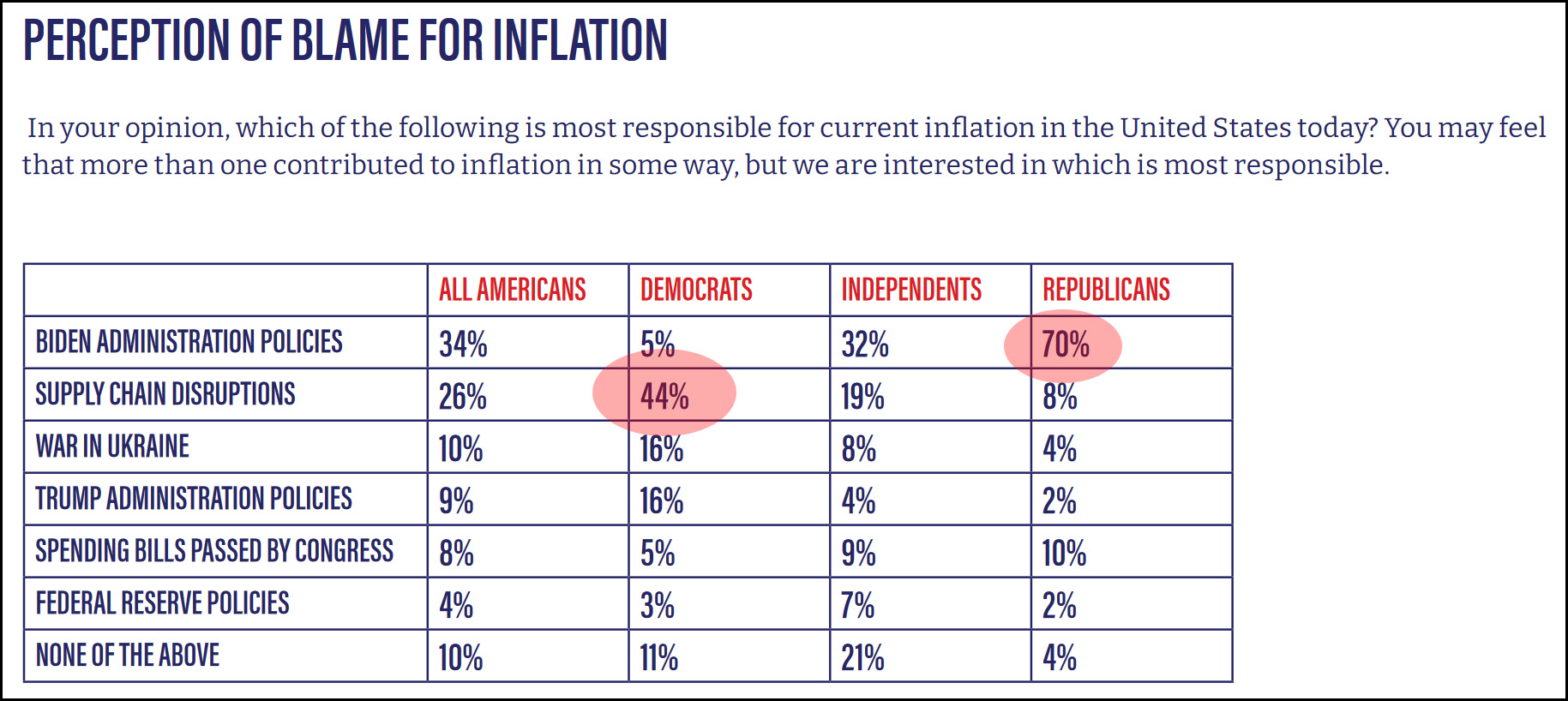 I wonder what Republicans really think about this? If they're serious about the cause not being spending bills passed by Congress (stimulus, CHIPS Act, infrastructure, the Inflation Reduction Act), what exactly is left to blame on "Biden administration policies"? It is a mystery.
I wonder what Republicans really think about this? If they're serious about the cause not being spending bills passed by Congress (stimulus, CHIPS Act, infrastructure, the Inflation Reduction Act), what exactly is left to blame on "Biden administration policies"? It is a mystery.

